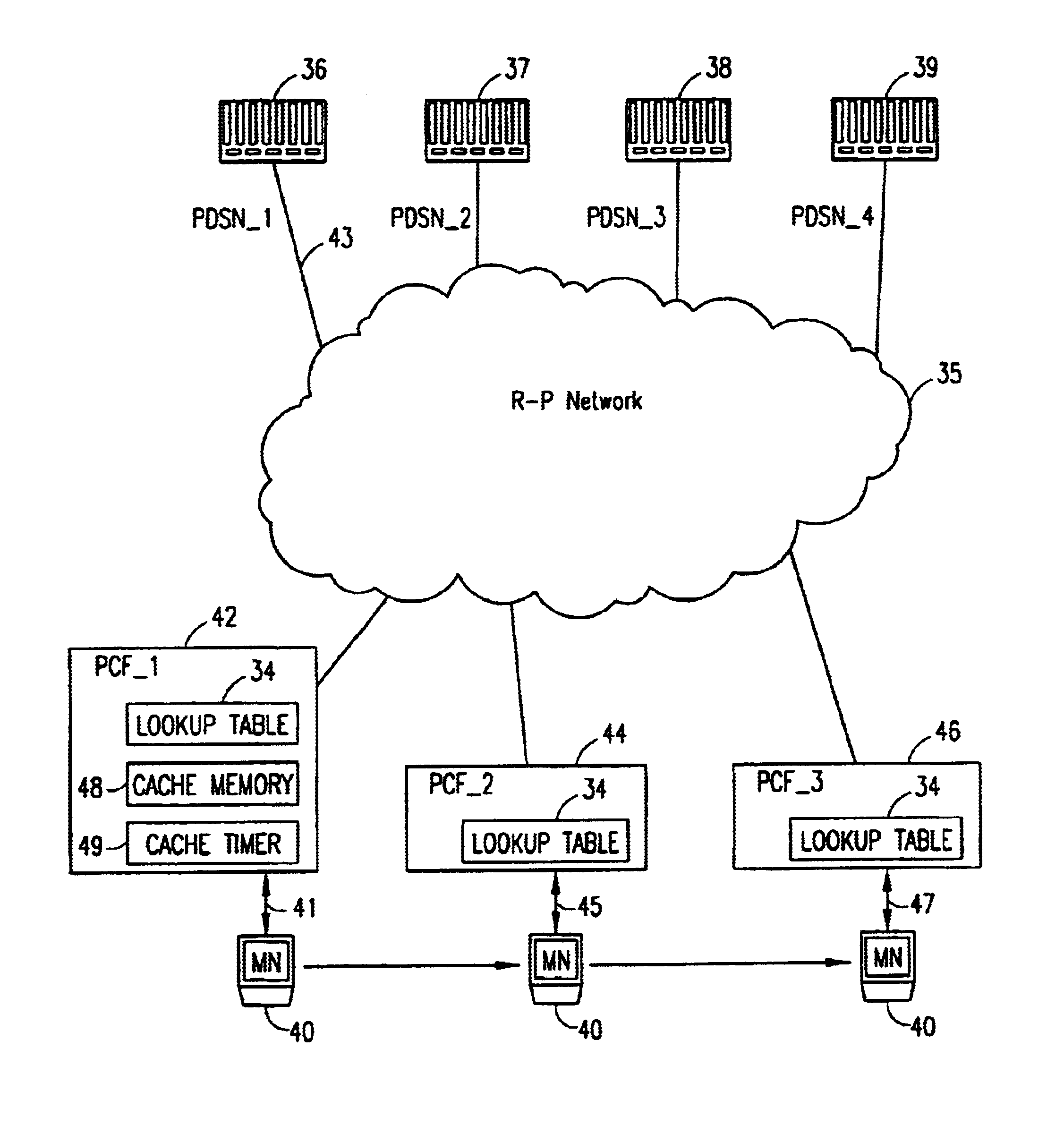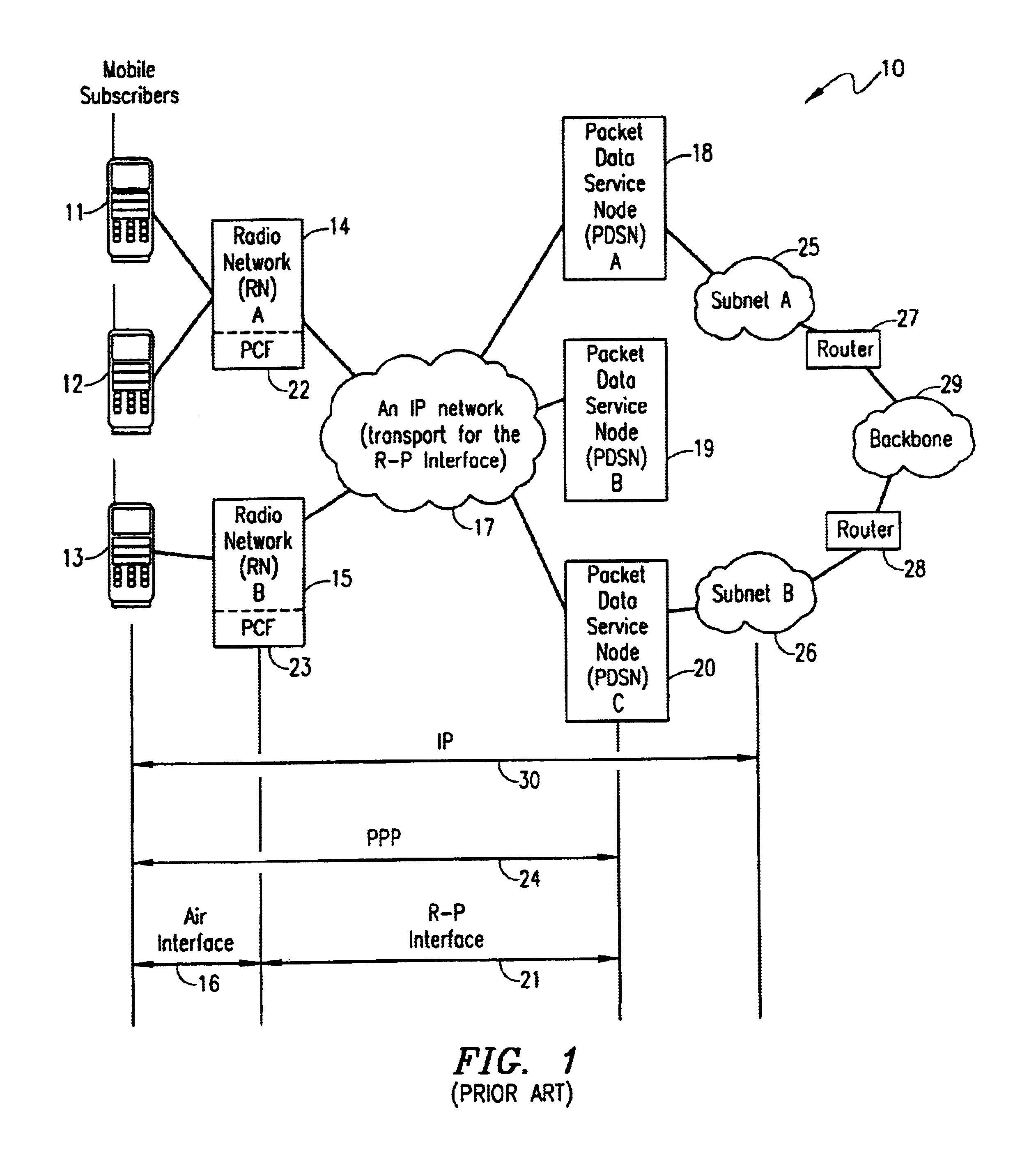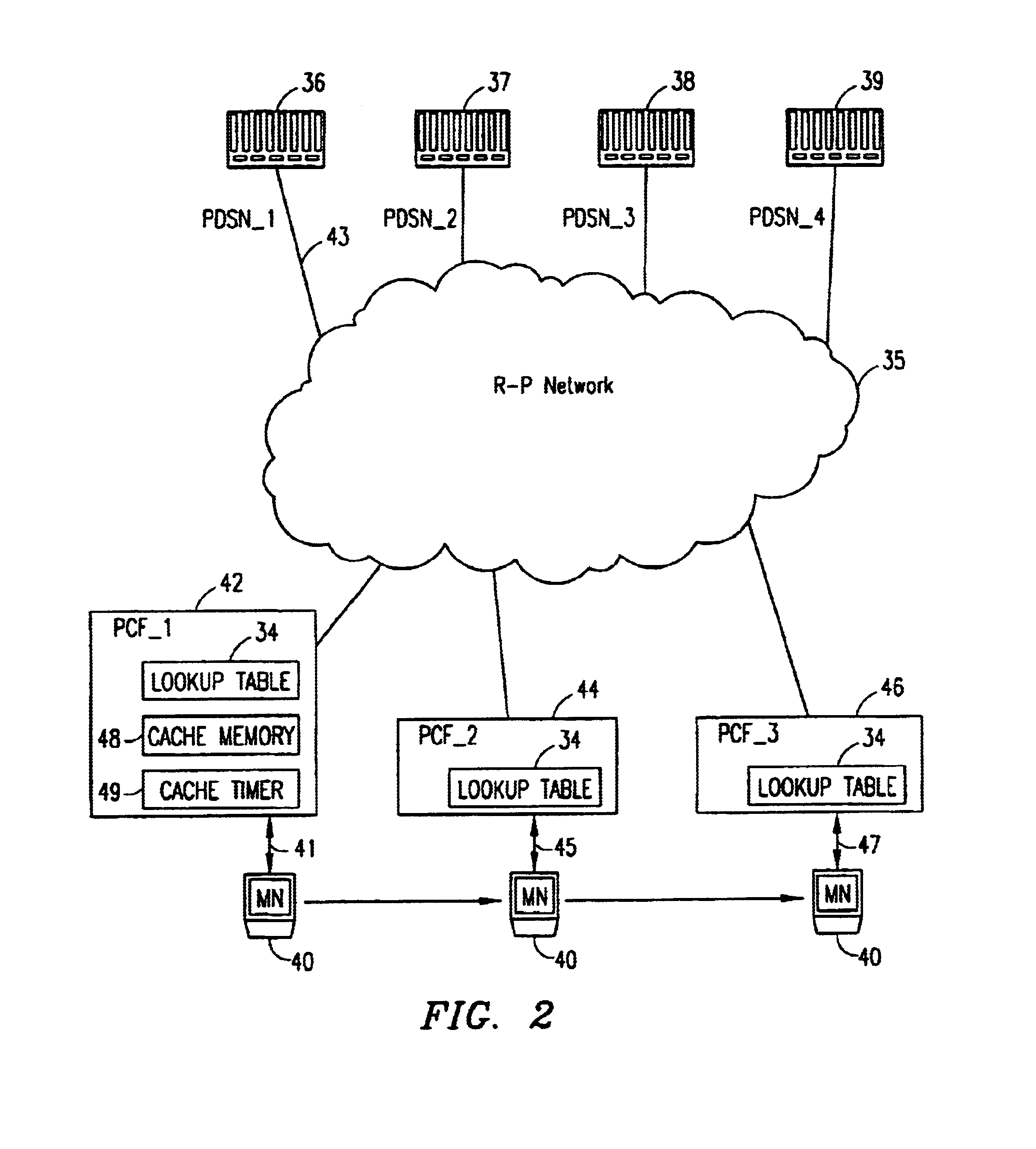Packet core function and method of selecting a packet data service node/foreign agent in a packet data network
a packet data network and core function technology, applied in the field of radio telecommunication systems, can solve the problems of inability to easily move between different pdsns, process could be long enough to be visible to the user, and inefficient use of air interfaces
- Summary
- Abstract
- Description
- Claims
- Application Information
AI Technical Summary
Problems solved by technology
Method used
Image
Examples
example utilizing simple
FIG. 2 is a simplified block diagram of an R-P network 35 illustrating a PDSN-selection scenario in which a simple hash function is utilized for PDSN selection from a plurality of PDSNs 36-39 distributed throughout a network. First, an MN 40 sends an origination message 41 to PCF.sub.-- 1 (42). Based on the MN's IMSI, PCF.sub.-- 1 determines, using the hash function, an index into the static lookup table 34 of PDSNs. Connection to PDSN.sub.-- 1 (36) is determined, and an R-P link 43 is established with PDSN.sub.-- 1 followed by PPP connection establishment and Mobile IP registration.
Next, the MN 40 roams into the coverage of PCF.sub.-- 2 (44) (this can be a hard handoff or a dormant handoff). If it is a hard handoff, the handoff request 45 contains the IP address of the serving PDSN.sub.-- 1 (PPP connection). If it is a dormant handoff, PCF.sub.-- 2 uses the lookup table 34 where the IMSI of the MN points to the PDSN presently hosting the PPP connection (PDSN.sub.-- 1)....
second embodiment
A second embodiment provides an alternative method of re-selecting the PDSN, following an inter-PCF / intra-PDSN handoff. This embodiment helps to ensure that during the lifetime of a PPP session, the same PDSN is selected when the user returns to a previously visited PCF following handoffs. After initial PDSN selection with the hash function, and the inter-PCF / intra-PDSN handoff, a cache memory 48 in the original PCF serving the MN retains the IP address of the PDSN as well as the Mobile Station Identification (MSD) of the MN for the duration of a cache timer 49. The cache timer is set to a value at least equal to the R-P timer so that the information is retained for an additional period of time following timeout of the PPP session (i.e., following expiration of the R-P Ad timer). If the MN returns to the original PCF prior to the expiration of the cache timer 49, the PCF determines which PDSN to select from the stored MSID and PDSN IP address. The PCF then reconnects the MN to the P...
third embodiment
A third embodiment provides an additional alternative method of re-selecting the PDSN, following an inter-PCF / intra-PDSN handoff. In this embodiment, the original PCF sends an Information Message to the MN with the IP address of the PDSN that has been selected to host the PPP session using, for example, CDMA 2000 layer 3 signaling. Following any dormant handoff (origination request), the MN supplies the new serving PCF with the IP address of the PDSN hosting the PPP session.
FIG. 3 is a message flow diagram illustrating the flow of messages when a PDSN IP address is provided to an MN 40 at R-P establishment in accordance with the teachings of the present invention. The messages are sent between the MN 40, a Base Station Controller (BSC) 51, a Mobile Switching Center (USC) 52, a PCF 53, and a PDSN 54. At 55, the MN sends an origination message to the BSC which returns a BS Acknowledgment Order 56. The BSC then sends a Connection Management (CM) Service Request 57 to the MSC which retu...
PUM
 Login to View More
Login to View More Abstract
Description
Claims
Application Information
 Login to View More
Login to View More - R&D
- Intellectual Property
- Life Sciences
- Materials
- Tech Scout
- Unparalleled Data Quality
- Higher Quality Content
- 60% Fewer Hallucinations
Browse by: Latest US Patents, China's latest patents, Technical Efficacy Thesaurus, Application Domain, Technology Topic, Popular Technical Reports.
© 2025 PatSnap. All rights reserved.Legal|Privacy policy|Modern Slavery Act Transparency Statement|Sitemap|About US| Contact US: help@patsnap.com



